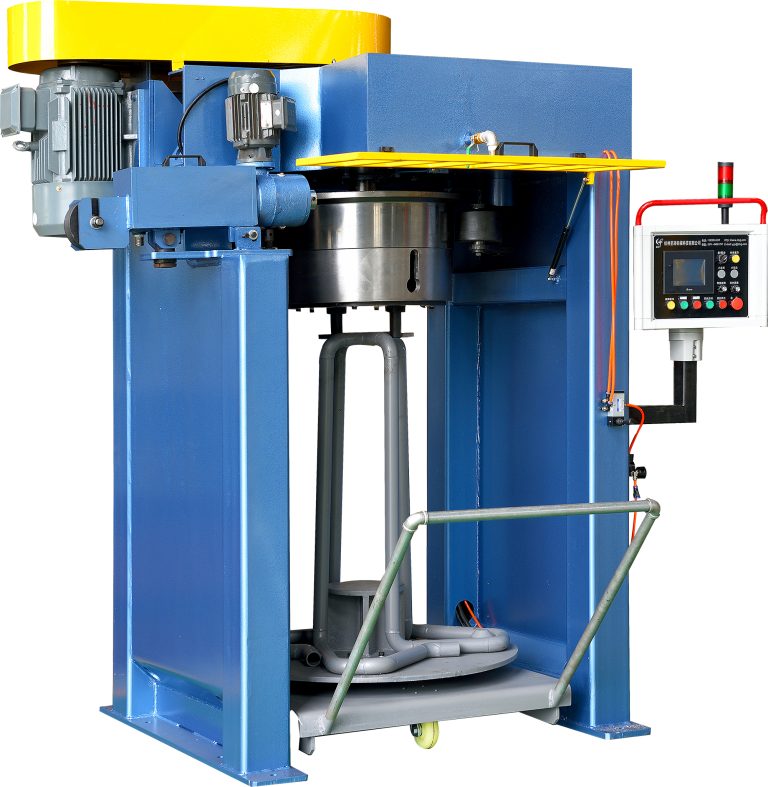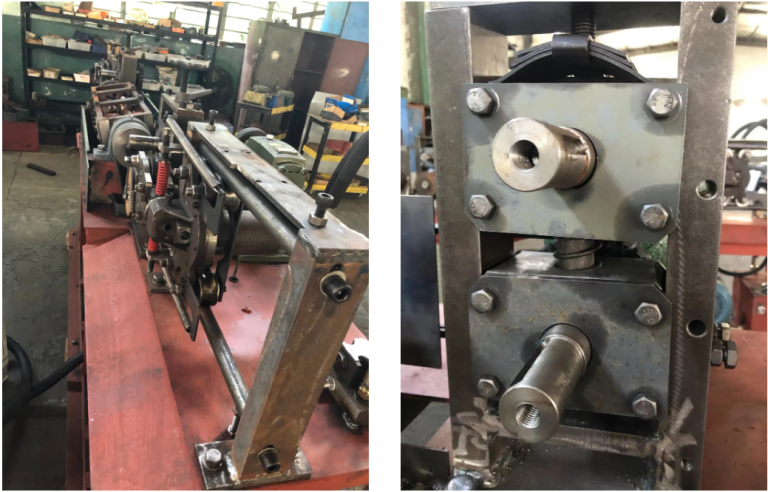Wire drawing machines are essential tools in the manufacturing industry for producing wire of various diameters and lengths. One crucial component of a wire drawing machine is the die box, which houses the drawing dies that shape the wire as it passes through the machine. Traditional die boxes are stationary, but recent advancements in technology have led to the development of rotating die boxes. In this article, we will explore the benefits of using a rotating die box in wire drawing machines.
One of the primary advantages of a rotating die box is improved wire quality. By rotating the die box, the wire is subjected to a more uniform and consistent drawing process. This results in a smoother surface finish and more precise diameter control. Additionally, the rotation of the die box helps to reduce friction between the wire and the die, leading to less wear and tear on the equipment and longer die life.

Another benefit of using a rotating die box is increased productivity. The rotation of the die box allows for higher drawing speeds, which means more wire can be produced in a shorter amount of time. This is especially beneficial for manufacturers who need to meet tight production deadlines or have high-volume orders to fulfill. Additionally, the improved wire quality mentioned earlier can lead to fewer rejects and rework, further increasing productivity and reducing costs.
In addition to improved wire quality and increased productivity, rotating die boxes also offer greater flexibility in wire drawing operations. The ability to adjust the rotation speed of the die box allows manufacturers to fine-tune the drawing process to meet specific requirements for different types of wire. This flexibility is especially useful for producing wire with unique properties or for experimenting with new materials and processes.
Furthermore, rotating die boxes can help to reduce downtime and maintenance costs. The reduced friction and wear on the equipment mean that less frequent maintenance is required, saving time and money. Additionally, the improved wire quality and consistency can lead to fewer machine stoppages and less downtime for adjustments and repairs. Overall, the use of a rotating die box can help manufacturers to maximize the efficiency and reliability of their wire drawing operations.
In conclusion, the benefits of using a rotating die box in wire drawing machines are clear. Improved wire quality, increased productivity, greater flexibility, and reduced downtime and maintenance costs are just a few of the advantages that manufacturers can expect to see when implementing this technology. As the manufacturing industry continues to evolve and demand for high-quality wire products grows, investing in a rotating die box for wire drawing machines is a smart choice for any manufacturer looking to stay competitive in the market.
How to Properly Maintain and Care for a Rotating Die Box in Wire Drawing Machines
Wire drawing machines are essential tools in the manufacturing industry, used to reduce the diameter of metal wires by pulling them through a series of dies. One crucial component of a wire drawing machine is the rotating die box, which houses the dies that shape the wire as it passes through. Proper maintenance and care of the rotating die box are essential to ensure the machine operates efficiently and produces high-quality wire products.
To begin with, regular cleaning of the rotating die box is essential to prevent buildup of dirt, debris, and metal shavings that can affect the performance of the machine. Use a soft brush or compressed air to remove any particles that may have accumulated inside the die box. Be sure to clean the dies themselves as well, as any buildup on the die surfaces can cause the wire to snag or break during the drawing process.
In addition to cleaning, it is important to inspect the rotating die box regularly for any signs of wear or damage. Check for cracks, dents, or other defects that may affect the alignment of the dies or the rotation of the box. If any issues are found, they should be addressed promptly to prevent further damage to the machine and ensure the quality of the wire produced.
Proper lubrication of the rotating die box is also crucial to its performance. Use a high-quality lubricant recommended by the manufacturer to ensure smooth rotation of the box and reduce friction between the dies and the wire. Be sure to follow the manufacturer’s guidelines for the type and frequency of lubrication required to keep the rotating die box in optimal condition.
Another important aspect of maintaining a rotating die box is to check the alignment of the dies regularly. Misaligned dies can cause the wire to be drawn unevenly or break during the process, leading to wasted material and downtime for the machine. Use a dial indicator or other precision tool to ensure that the dies are properly aligned and make any necessary adjustments as needed.
In addition to regular maintenance, it is important to handle the rotating die box with care to prevent damage during operation. Avoid dropping or mishandling the box, as this can cause misalignment of the dies or other issues that may affect the performance of the machine. Follow proper safety procedures when working with the wire drawing machine to prevent accidents that could damage the rotating die box or other components.
In conclusion, proper maintenance and care of the rotating die box in a wire drawing machine are essential to ensure the machine operates efficiently and produces high-quality wire products. Regular cleaning, inspection, lubrication, and alignment checks are key aspects of maintaining the rotating die box and preventing damage that could affect the performance of the machine. By following these guidelines and handling the rotating die box with care, manufacturers can prolong the life of their wire drawing machines and produce consistent, high-quality wire products for their customers.






